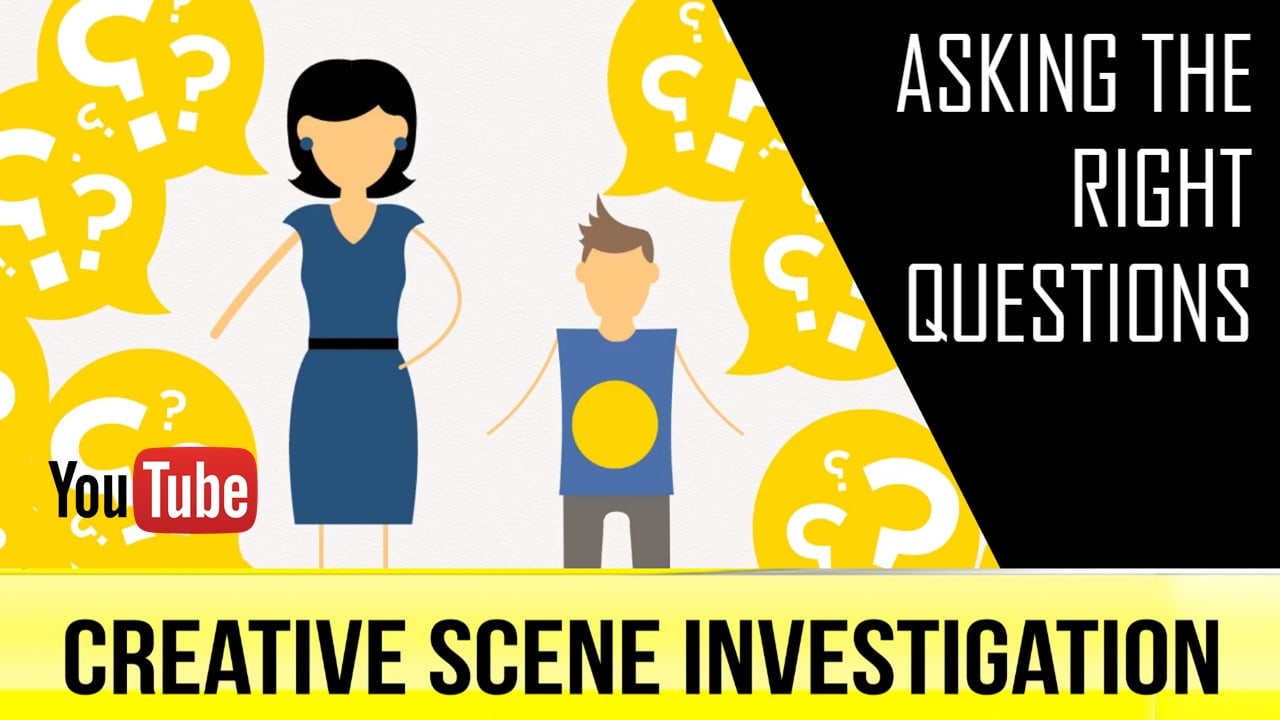Part 1: Asking The Right Questions
By Gaia Grant
“The important and difficult job is never to find the right answers, it is to find the right question.” Peter Drucker
Effective Design Thinking must start with enquiry. It involves asking the right questions, and involves using a creative thinking strategy we call ‘cultivating curiosity’. This is such a crucial first step in the creative process, yet it is a step that is often overlooked or rushed through.
Dealing with ‘wicked’ and complex challenges
‘Cultivating curiosity’ is the key opening strategy to start the Enquiry phase, which enables us to frame a challenge effectively. We need to be creative to deal with ‘wicked’ problems, that is problems that are ill-defined and complex. For these issues, both the problem and the solution are unknown at the outset. So how can these problems best be solved?
Starting with enquiry for empathy
Although there is a tendency to want to jump straight to the solutions, the creative process needs to start with enquiry. Asking questions is something children are naturally good at, and yet at the time in life when we need this skill most, it seems to be least effectively utilised. This strategy allows the problem solver to understand the perspective of the end user, which in turn can help to develop the empathy needed to begin the design thinking and creative problem-solving process.
Asking the wrong questions can lead to the wrong solutions
Teams that jump straight into the ideation and brainstorming stage without this vital step are in danger of asking the wrong questions. This will almost certainly lead to the wrong answers, or at best, answers that are limited inside a predefined box. When you ask questions differently, you look for answers in different places and come up with more original solutions. Identifying the best questions to ask to lead to the most open thinking on the challenge can then be a crucial first step.
The right questions can help target the key issues
Creative people are not just focusing on attacking the noisy part of the problem that happens to capture our attention. They are able to ask questions that open up all the potential options. The goal of this initial problem-solving stage – the definition stage – is to target the right problem to solve, and then to frame the problem in a way that invites creative solutions. Using questioning as a technique throughout the problem solving process can then also ensure the there is a continual re-targeting to lead to the best solutions.
To manage this phase effectively:
- Identify the end users to be able to target their specific needs
- Define the right clarification questions to ask to understand the end user’s challenges / needs
- Decide what questions will open up most possibilities for ideation– eg frame with ‘How to…?’ or ‘How might we…?’ or ‘What might be all the ways…?’ or ‘Why not…?’ questions
- Approach the process with a curious and enquiring mindset – continue asking relevant questions at each phase of the ideation and problem solving process
If you are interested in learning more about Cultivating Curiosity as a key strategy to help develop creativity watch the video here and see a sneak peek at the at the other strategies to prepare for Design Thinking.

Gaia Grant (PhD) is a lecturer and researcher at the University of Sydney Business School in the Discipline of Strategy, Innovation, and Entrepreneurship, focusing on research into innovation paradoxes and ambidextrous leadership. Gaia is also a Director of Tirian Innovative Solutions, & the co-author (with Andrew Grant) of a number of books including ‘The Innovation Race’, and “Who Killed Creativity?”.

Andrew Grant is the Director of Tirian Innovative Solutions, and co-author (with Dr Gaia Grant) of a number of books including ‘The Innovation Race’, and “Who Killed Creativity?”.



